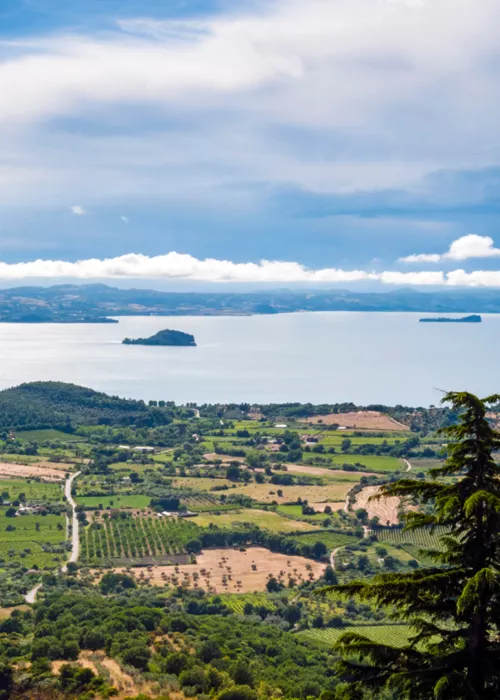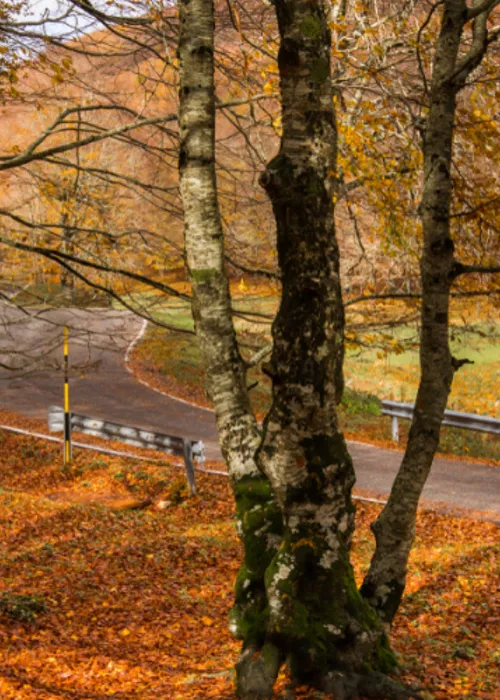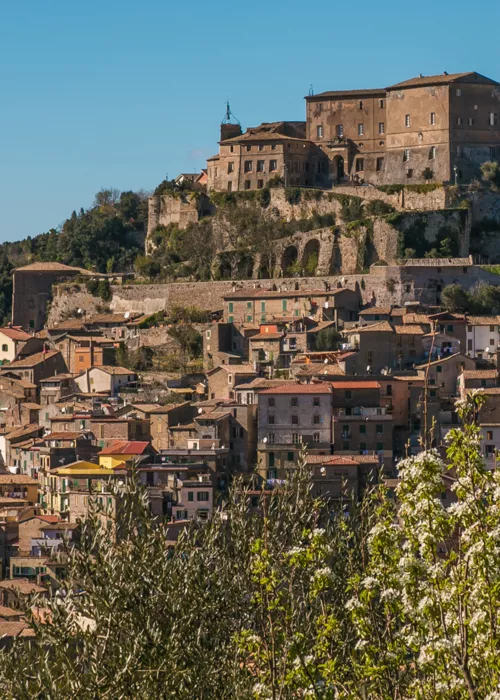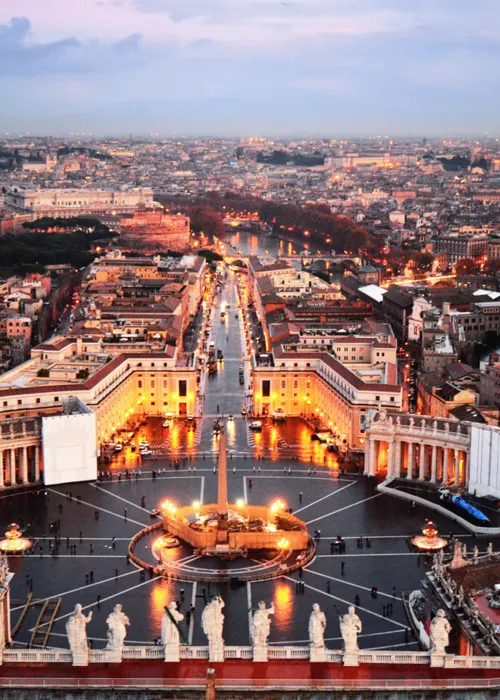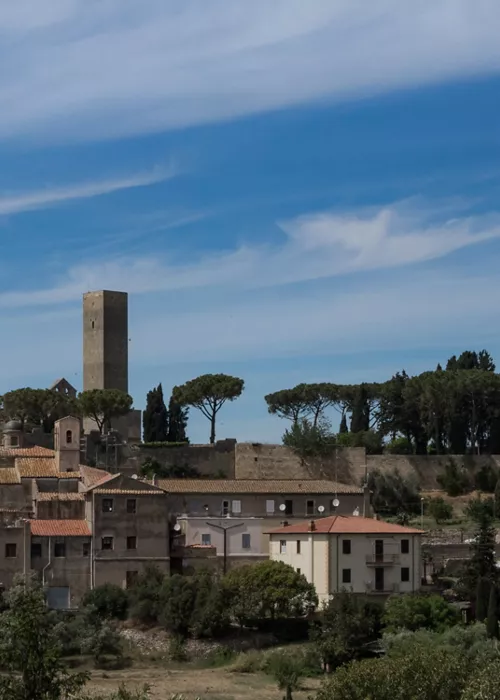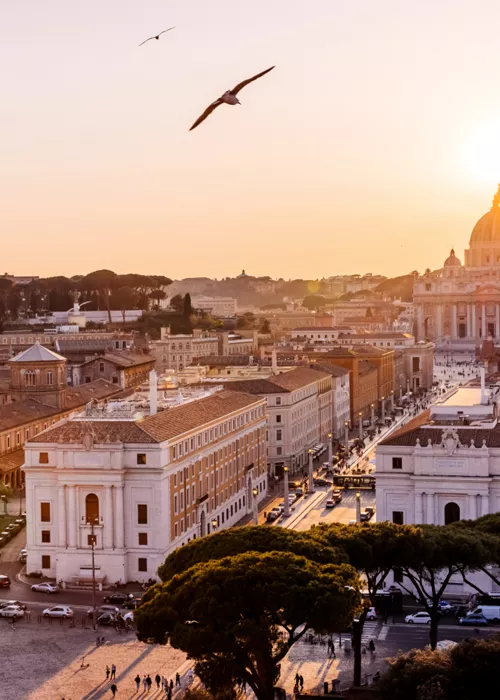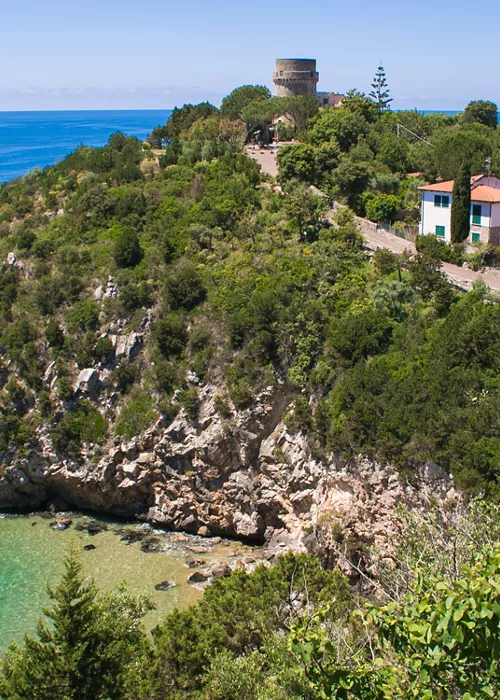Basilica of Sant'Agostino in Campo Marzio

Piazza Navona, with its bustling crowds, is only 200 metres away. As soon as you cross the threshold of the Basilica of Sant'Agostino in Campus Martius, however, you feel as if you have been projected into another dimension, which preserves the luminous beauty of the square, but envelops it in a devout silence that has welcomed six centuries of prayer. You are in the most important church of the Order of St. Augustine, founded in 1420 and rebuilt in the mid-18th century by Vanvitelli. When you enter for the first time, you will notice a fresco by Raphael, the Prophet Isaiah, and a painting of great importance by Caravaggio, the Madonna dei Pellegrini (or Madonna of Loreto), which, in the early 1600s, aroused great scandal due to the common realism of the figures and the choice of the model, a courtesan. But the Romans, particularly the faithful of the Sant'Eustachio district, pray above all before Jacopo Sansovino's newly restored Madonna del Parto, the miraculous patroness of women in labour. They also pray in front of the tomb of Saint Monica, which was transported here from the village of Ostia in 1430: it rests in a sarcophagus sculpted by Isaiah of Pisa. Saint Monica was the mother of Saint Augustine of Hippo (354–430), so it seemed natural to move her remains to the new church of the Order inspired by the Rule of her son. Still today, the Augustinians have their mother house here, in the convent annexed to the basilica. They also preserve an invaluable heritage of manuscripts and ancient volumes, collected in the Biblioteca Angelica, one of the first three European libraries to be opened to the public. Indeed, study and culture are part of the order's DNA: Augustine was the "Doctor Gratiae", one of the four great Doctors of the Western Church, who, with his work, influenced the history of European religiosity and philosophy.
Church of San Luigi dei Francesi

The Church of San Luigi dei Francesi is a three-minute walk from Sant'Agostino. This is long enough to pass across a square, after Via della Scrofa, named after Giuseppe Toniolo: a great intellectual, sociologist and economist, who was one of the leading figures of the Catholic movement and was beatified by Benedict XVI in 2012. The church of San Luigi, consecrated in 1589 but modified in the 18th century, was built by the French community based in Rome to glorify their homeland. If you love the art of Caravaggio, there is no need to say too much, this church is an essential destination: the Contarelli chapel is decorated with three masterpieces depicting key moments in the life of St. Matthew the Evangelist, culminating in the dramatic scene of his martyrdom. According to 17th-century sources, now subject to question, St. Matthew and the angel had been envisaged differently by the artist, who in an original version had depicted Matthew as a commoner whose hand the angel physically guided while writing the Gospel. In the final version, the inspiration from on high leaves the evangelist to write freely, almost as a metaphor for free will and the relationship between faith and intellectual activity. With regard to intellectuals, next to the church is the Institut Français - Centre Saint-Louis, a cultural institute founded by the Catholic philosopher Jacques Maritain in 1945; the church itself contains the tomb of Giuseppe Sisco, who was a pioneer of surgery (specialising particularly in breast cancer) and a doctor of Sapienza University, as well as the promoter of the refoundation of the Accademia dei Lincei.
The cultural character of this block, however, has even more ancient roots and is evidenced, on the opposite side of Via del Salvatore, by the imposing presence of Palazzo Madama. Before becoming the seat of political institutions (today the Senate of the Republic), the palace was the centre of diffusion of Florentine humanist culture in the Eternal City. It was, in fact, the Roman residence of the Medici family, which in the first half of the 1500s produced two patron popes, Leo X and Clement VII. At the time, the scholars of the Florentine Academy met here, while in the 18th century, Palazzo Madama became the reference point of the Quirini Academy.
Basilica of Sant'Eustachio

For a long time, the Basilica of Sant'Eustachio was called "in platana", because according to tradition, the Emperor Constantine had the original nucleus of this church, seen today in its 18th-century form, built near a plane tree. According to different sources, the tree was located either in the site of the martyrdom or in the garden at the home of Saint Eustace, a Roman centurion whose hagiography provides interesting insights and who is included in the list of 14 "auxiliary saints" to whom the faithful turn for intercession for special needs. The saint is said to have been converted when, while hunting near Tivoli, he saw a deer with a cross or with the image of Christ between its antlers. With his baptism, he changed his name from Placidus to Eustace and at the time of Hadrian, perhaps in the year 120, he was condemned to death for refusing to honour the gods. The circus lions allegedly refused to maul him, bowing to him, and the emperor then had him burnt alive along with his family. The story of Eustace's conversion can be found in the 16th-century fresco by the Zuccari brothers on the façade of the Palazzetto di Tizio da Spoleto, which overlooks the same square: it is summarised by the stag's head that crowns the façade of the church. The remains of the saint and his family are contained in an ancient red porphyry urn under the main altar. In the Renaissance, the basilica became the reference point for the teachers of the Roman University or Studium Urbis, which in the 15th century settled in the Sant'Eustachio district and in the 16th century found a unified location a few steps from here, in the Sapienza building. In fact, it is stated in a 16th-century text that "the professors of the Roman university held their religious meetings in Sant'Eustachio, and the university kept its archive there".
Church of Sant'Ivo alla Sapienza

In the 16th century, the newly built Sapienza building was provided with its own church, small yet architecturally splendid, destined to replace the Basilica of Sant'Eustachio as the religious reference point for the professors of the Studium Urbis (the Roman University, officially renamed Studium Urbis Sapientiae in 1632). This is the Church of Sant'Ivo alla Sapienza, designed by Francesco Borromini and consecrated in 1660. It rises on the far side of the palace's central courtyard: its unmistakable dome, enveloped by a lantern tower with convex sides, is surmounted by a lantern with a spiral decoration that accentuates its upward thrust and dynamism. Unanimously considered a masterpiece of Baroque, it is dedicated to Saint Ivo Hélory (1253–1303), a highly educated French lawyer who assisted the poor free of charge in trials. Today it is the church of the Paul VI Cultural Centre in Rome, which invites young people and adults, university students and professionals to deepen the dialogue between faith and culture: the dedication to Paul VI is not accidental, because here, in the Rectory of Sant'Ivo, the future Pope, Giovanni Battista Montini, was a spiritual assistant of the FUCI, the Italian Catholic University Federation. La Sapienza University, which was located in the Sapienza building until 1935, has profoundly influenced the character of the Sant'Eustachio district: one of the most curious items is the Fountain of Books in nearby Via degli Staderari, which features the unusual subject of two piles of books supporting the spouts from which the water flows.
Basilica of Sant'Andrea della Valle

Once upon a time, the splendid Baroque façade of the Basilica of Sant'Andrea della Valle would suddenly appear in all its grandeur, making a dramatic presence among the narrow streets, alleys and small squares of the Sant'Eustachio district. At the end of the 19th century, the opening of Corso Vittorio Emanuele II and then Corso del Rinascimento isolated it and somewhat penalised it, although Sant'Andrea della Valle remains a church with a strong architectural impact, thanks above all to the huge dome designed by Carlo Rainaldi. The artistic value is also remarkable: inside you can see splendid seventeenth-century frescoes by Lanfranco and Domenichino and paintings by Mattia Preti. Art and architecture glorify Sant Andrew the Apostle and Saint Sebastian, as the basilica was built at the end of the 16th century to replace an older church that had been erected on the martyr's tomb. The burial site would be beneath the Barberini chapel, the first on the left, commissioned by the highly cultured Cardinal Maffeo Barberini (future Pope Urban VIII) and consecrated in 1616. The basilica, entrusted to the Order of Clerics Regular or Theatines, also preserves the memory of Saint Cajetan of Thiene, founder of the Order, and of Saint Andrew Avellino, the first Theatine saint. With regard to prelates of refined intellect, here you can find the tombs of Pope Pius II, also known as Enea Silvio Piccolomini, a humanist and founder of the city of Pienza; his nephew Pius III, aka Francesco Nanni Todeschini-Piccolomini, who was one of the shortest-lived popes in the history of the church (he reigned just 26 days) and founder of the Piccolomini Library at the Cathedral of Siena; and Giovanni della Casa, an archbishop, poet and author of Galateo: The Rules of Polite Behavior (in the second chapel on the left). Leaving the basilica, to get an idea of the ancient appearance of this area, head for Via del Sudario, a short street running parallel to Corso Vittorio Emanuele II. It overlooks the Church of the Santissimo Sudario dei Piemontesi, which was the church of the Piedmontese and Savoyard community in Rome, linked to the House of Savoy and to the veneration of the Holy Shroud. Here, in 1665, Francis de Sales, Doctor of the Church, born in Upper Savoy and co-patron of writers, was proclaimed a saint.








